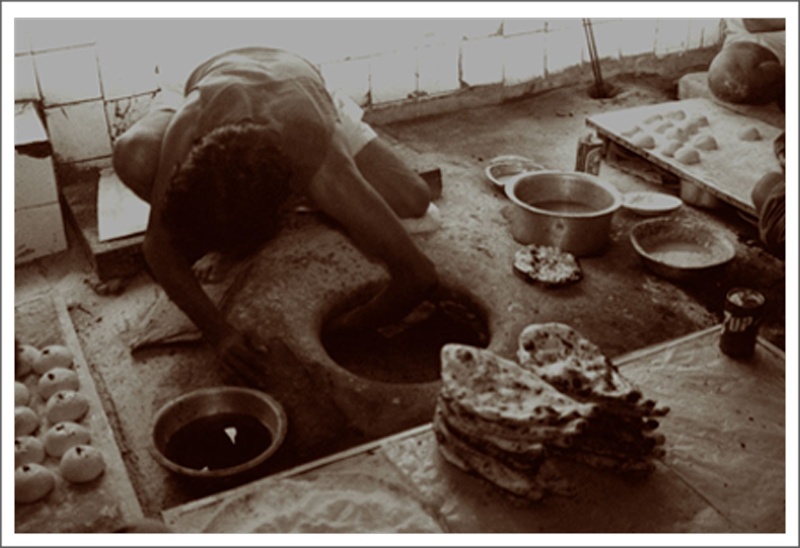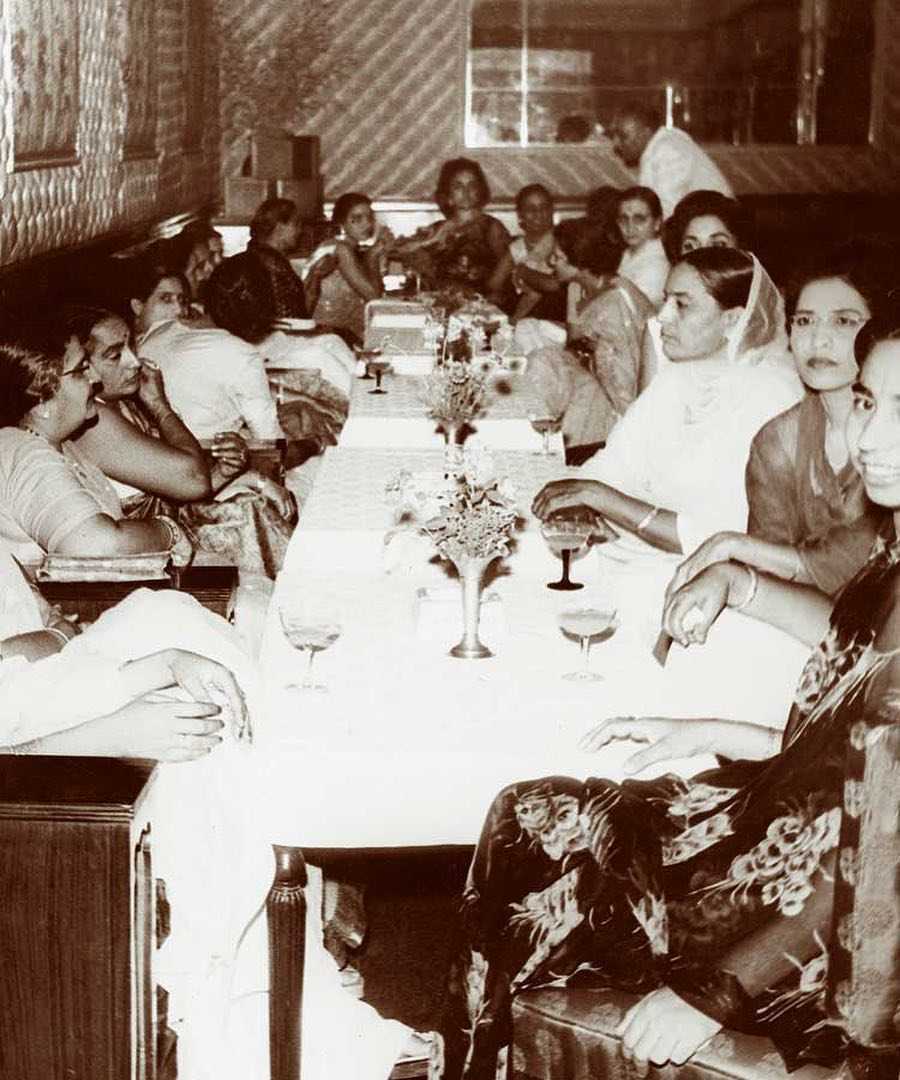You’ll find a list of tandoor items on the menu of most Indian restaurants, no matter what corner of the world you’re in. The
in an urn-shaped oven is not recent, but one that has been in existence since time immemorial.
While today the tradition also encompasses meats and other succulents, history reveals that people have been enjoying the wonders of the tandoor right from the time of the Harappan civilisation.
An interesting turn of events led to the tandoor being passed down through the lands of undivided Punjab to Delhi — where the historic Moti Mahal restaurant has kept the secret of the tandoor alive since 1920.

Moti Mahal in Delhi was started by Shri Kundan Lal Gujral to replicate the art of Tandoor that he had started in Peshawar, Picture source: Moti Mahal website
The using this method was well-known during the Indus Valley Civilisation 5,000 years ago, suggested by traces of tandoors discovered during the excavation of these sites. People would build cylindrical clay ovens into the ground and light fires with charcoal. The beauty of creating this structure was that within it, temperatures would rise to as high as 400 degrees Celsius, lending the bread and meat a charred or slightly smoky flavour.
But while the tandoor was prevalent during these historical times, it was only during the Mughal era that cooking meats in this style gained popularity.
Emperor Jehangir is to thank for this. So fascinated was he by the of dishes cooked in the tandoor that he began pushing for meats to be prepared in the same style. And that’s not all.
As the Mughals would shift base and move their army camps from one site to another, Jehangir fondly missed his tandoori delights, and to satiate his appetite, he had a portable tandoor created to prepare meats and bread on the go.
This form of cooking remained popular even after the sun set on the Mughal era — especially in the Sikh community. Guru Nanak Dev, founder of the Sikh religion, was intent on secularism, encouraging people of all religious backgrounds to eat together. Through the formation of sanjha chulha (common ovens), people from different communities would , with the women using tandoor ovens to bake the bread.
However, while the tandoor was a symbol of community before Partition, it is only after this historical event that it reached the modern world.
The singular reason for the prevalence and popularity of tandoori delights in Mughlai cuisine, across India in general, was because of a gentleman named Shri Kundan Lal Gujral. When he was just a little boy, his father passed away. Kundan became responsible for . This was around the same time that India was divided into two separate nations.
Among the scores of people who migrated across borders was Kundan, who left behind his eatery in Peshawar — Moti Mahal — and moved to Delhi. Unwilling to give up on the work he had built since 1920, he carried the tandoor tradition with him to the new region. With a friend, he purchased a space in Daryaganj, eventually setting up the first Moti Mahal restaurant, the pride of which continues to be the tandoor to date.
As Monish Gujral’s book Moti Mahal’s Tandoori Trail highlighted, “He had the chicken roasted in a mud-baked oven made from a hole dug into the ground and lit with wood or coal — the tandoor (derived from a Persian word). Along with this came the usual tandoori roti, constituting a thick ball of kneaded wheat, in the same oven, made of the familiar ground wheat, but swollen to a crisp roundness. The combination was lethal for the weighty who were hard put to refrain and paradisiacal for those who could afford to splurge.”

Moti Mahal in Delhi was a space for people to gather and savour the flavours of tandoor, Picture source: Moti Mahal
The eatery’s website offers a glimpse into the slew of influential clientele that it has served. It reads, “Moti Mahal has served the traditional food, from a normal curry and a roadside tandoor baking bread in a delightful manner with full of innocuity to satiate the palates of such as the late US president Richard Nixon, then the Canadian prime minister Pierre Trudeau, the king of Nepal, and Soviet leaders Alexie Kosygin, Nikolia Bulganin and Nikita Krushehev, and we have taken pride by winning the heart and taste buds of every generation of Prime Minister of India.”
It adds, “So this is the journey [of] a simple idea of cooking in earthen ovens, which had started in 1920 in an eatery of Peshawar, [became] an international brand known as The Moti Mahal Group.”
Today, while 90 outlets have been added to the , the fame of the tandoor has spread across the globe. Every land has come up with its own concoction of spices to be added to the marinade. As the delicacies of the tandoor grace dining tables across the world, it is an ode to how this feast was born out of pure simplicity.
Edited by Divya Sethu
While today the tradition also encompasses meats and other succulents, history reveals that people have been enjoying the wonders of the tandoor right from the time of the Harappan civilisation.
An interesting turn of events led to the tandoor being passed down through the lands of undivided Punjab to Delhi — where the historic Moti Mahal restaurant has kept the secret of the tandoor alive since 1920.
A love affair

Moti Mahal in Delhi was started by Shri Kundan Lal Gujral to replicate the art of Tandoor that he had started in Peshawar, Picture source: Moti Mahal website
The using this method was well-known during the Indus Valley Civilisation 5,000 years ago, suggested by traces of tandoors discovered during the excavation of these sites. People would build cylindrical clay ovens into the ground and light fires with charcoal. The beauty of creating this structure was that within it, temperatures would rise to as high as 400 degrees Celsius, lending the bread and meat a charred or slightly smoky flavour.
But while the tandoor was prevalent during these historical times, it was only during the Mughal era that cooking meats in this style gained popularity.
Emperor Jehangir is to thank for this. So fascinated was he by the of dishes cooked in the tandoor that he began pushing for meats to be prepared in the same style. And that’s not all.
As the Mughals would shift base and move their army camps from one site to another, Jehangir fondly missed his tandoori delights, and to satiate his appetite, he had a portable tandoor created to prepare meats and bread on the go.
This form of cooking remained popular even after the sun set on the Mughal era — especially in the Sikh community. Guru Nanak Dev, founder of the Sikh religion, was intent on secularism, encouraging people of all religious backgrounds to eat together. Through the formation of sanjha chulha (common ovens), people from different communities would , with the women using tandoor ovens to bake the bread.
However, while the tandoor was a symbol of community before Partition, it is only after this historical event that it reached the modern world.
The Partition of 1947
The singular reason for the prevalence and popularity of tandoori delights in Mughlai cuisine, across India in general, was because of a gentleman named Shri Kundan Lal Gujral. When he was just a little boy, his father passed away. Kundan became responsible for . This was around the same time that India was divided into two separate nations.
Among the scores of people who migrated across borders was Kundan, who left behind his eatery in Peshawar — Moti Mahal — and moved to Delhi. Unwilling to give up on the work he had built since 1920, he carried the tandoor tradition with him to the new region. With a friend, he purchased a space in Daryaganj, eventually setting up the first Moti Mahal restaurant, the pride of which continues to be the tandoor to date.
As Monish Gujral’s book Moti Mahal’s Tandoori Trail highlighted, “He had the chicken roasted in a mud-baked oven made from a hole dug into the ground and lit with wood or coal — the tandoor (derived from a Persian word). Along with this came the usual tandoori roti, constituting a thick ball of kneaded wheat, in the same oven, made of the familiar ground wheat, but swollen to a crisp roundness. The combination was lethal for the weighty who were hard put to refrain and paradisiacal for those who could afford to splurge.”
The magic of the tandoor

Moti Mahal in Delhi was a space for people to gather and savour the flavours of tandoor, Picture source: Moti Mahal
The eatery’s website offers a glimpse into the slew of influential clientele that it has served. It reads, “Moti Mahal has served the traditional food, from a normal curry and a roadside tandoor baking bread in a delightful manner with full of innocuity to satiate the palates of such as the late US president Richard Nixon, then the Canadian prime minister Pierre Trudeau, the king of Nepal, and Soviet leaders Alexie Kosygin, Nikolia Bulganin and Nikita Krushehev, and we have taken pride by winning the heart and taste buds of every generation of Prime Minister of India.”
It adds, “So this is the journey [of] a simple idea of cooking in earthen ovens, which had started in 1920 in an eatery of Peshawar, [became] an international brand known as The Moti Mahal Group.”
Today, while 90 outlets have been added to the , the fame of the tandoor has spread across the globe. Every land has come up with its own concoction of spices to be added to the marinade. As the delicacies of the tandoor grace dining tables across the world, it is an ode to how this feast was born out of pure simplicity.
Edited by Divya Sethu
